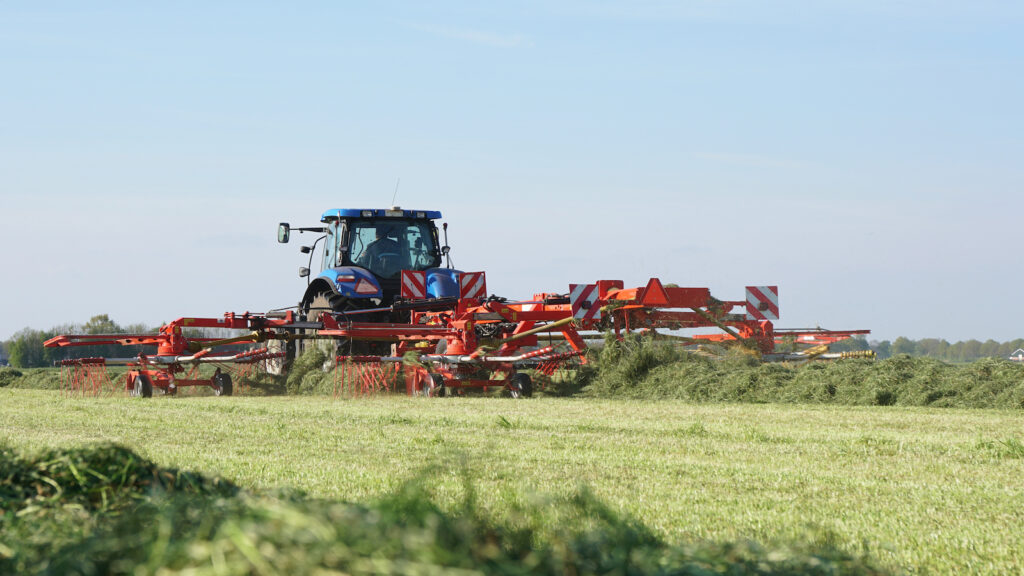How to stay safe during silage season
25th April 2023
Farmers are being urged not to compromise on safety in the rush for the first silage cut of the season.

Stock photo for illustration only.
As machinery may not have been used for several months, NFU Mutual is advising farmers to carry out machinery maintenance and ensure employees are properly inducted and trained ahead of the silage season.
“Getting high quality silage is vital for farmers who are facing high fertiliser and energy costs, but safety must remain at the forefront of minds this silage-making season,” said Hannah Binns, NFU Mutual’s rural affairs specialist.
“Working under pressure to get crops in before the weather changes is a perennial issue for farmers, but it is a well-known fact farm incidents happen when people are tired, machinery is pushed too hard or work continues in unfavourable conditions. No cut of silage is worth someone’s life or limb.”
Checks on brakes, tyres, trailer couplings, hydraulic pipes and lights are an essential part of a pre-cut maintained schedule, said Andy Mason, managing director of NFU Mutual Risk Management Services.
If new people are joining the team, make sure they are trained to operate the machinery they will be using and warn them about any hazards on the farm, such as steep slopes, slippery lanes and blind spots on public roads – as well as the actions to take to combat those hazards.
Staff must also know the safe working laods of trailers and must not allow them to be overfilled.
“You should never compromise on people’s safety and in many parts of the UK police forces are clamping down and making more checks on trailer loads,” Mr Mason concluded.
NFU Mutual silage safety checklist
Before silage harvesting:
- Make sure you have identified and assessed the hazards on the farm, in the field and the tasks that will be conducted during silage harvesting and know how to manage the risks
- Put in place a system for keeping in contact with lone workers
- Make sure new staff are properly inducted and trained for the work you give them – in particular the dangers of working with and around farm machinery
- Teach staff about the principles of “Safe Stop”: Make sure the handbrake is fully applied; controls and equipment are left safe; stop the engine; and remove the key, before leaving the vehicle or accessing the machine.
- Put in place measures to ensure children are kept away from working areas
- Make sure staff know the safe working loads of trailers and don’t allow trailers to be overfilled
- Ensure vehicles and trailers are road legal with fully maintained and working brakes, lights, indicators and flashing beacons. Also check the age, condition and pressures of tyres. Consider using a third party to inspect trailers, with accreditation such as the ‘Tilly Your Trailer’ scheme
- Consider letting local people know when you will be taking silage trailers on local lanes via neighbourhood social media sites to help people reroute journeys as this will cut delays and incident risks
Working in the fields:
- Regularly check moving parts of mowers, tedders, forage harvesters and balers, including guards and PTO shafts for wear or damage
- Switch off engines and ensure parts have stopped before clearing blockages or carrying out maintenance – remove keys as well to prevent accidental starting (Safe Stop!)
- Make sure drivers are aware of the locations and heights of overhead power lines and check that your machinery will safely pass under wires and restrictions
- Take special care to check for vehicles following behind before turning right into fields or yards, as this is a common cause of accidents
- Regularly clear up any mud deposits from roads – warn drivers with signage where mud may be present
- Be aware of potential walkers in fields with public rights of way and stop the vehicle if people are in close proximity
- Keep a mobile phone on you at all times – not left in a tractor or pick-up cab
- Take regular breaks to eat, drink and rest to stave off tiredness
Working on silage clamps:
- Keep people away from moving vehicles
- Ensure a filling plan is followed and that sight rails are visible at all times
- Never overfill a silage clamp as this increases the risk of vehicles overturning when rolling or filling
- Only use vehicles that are suitable for the task – fitted with an approved safety cab or Roll over Protection Structure (RoPS), well-lugged tyres, suitably weighted etc.
- For indoor clamps, keep away for the first 72 hours as this is when dangerous nitrogen dioxide gas can form in large quantities
Keep clear of the edge of the clamp (at least 1m) when (un)sheeting or removing tyres. If possible, use a mobile working platform or a hook or a pole to keep away from the edge of the face
